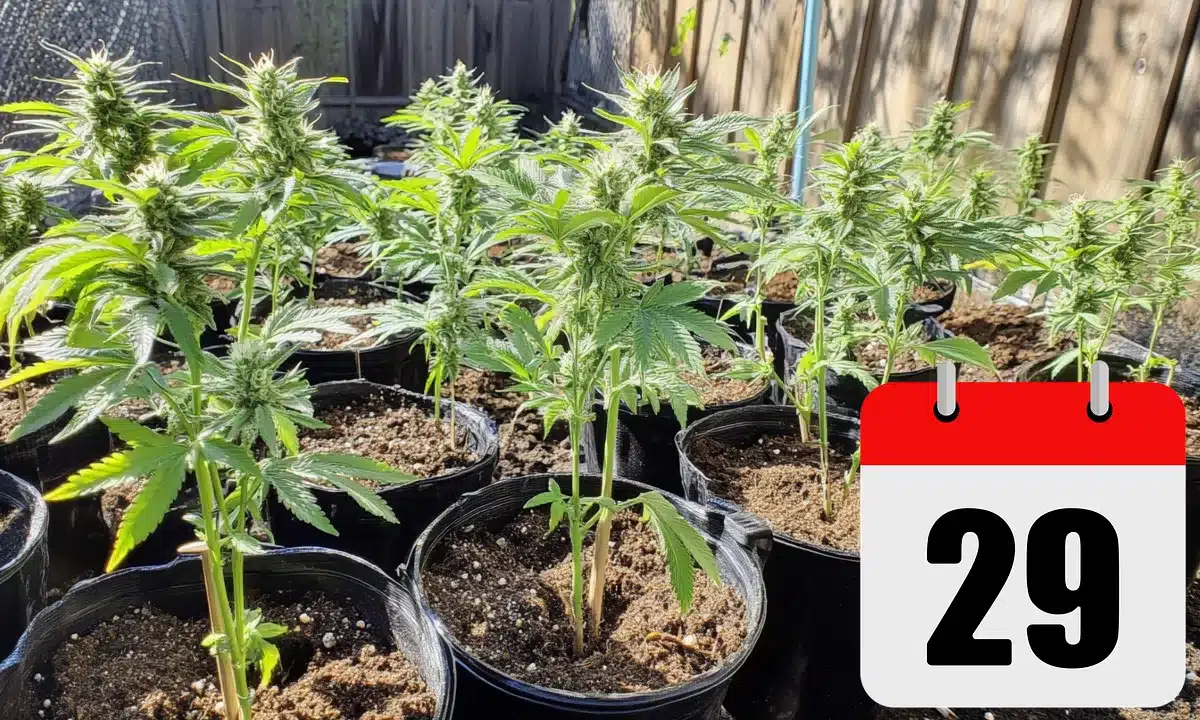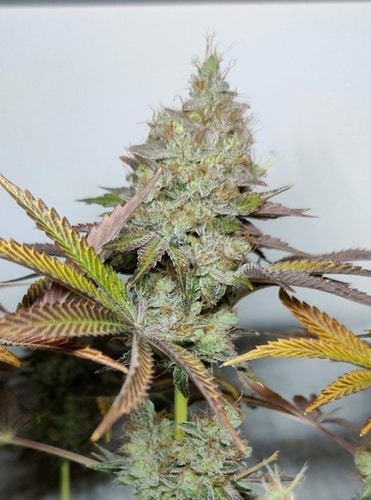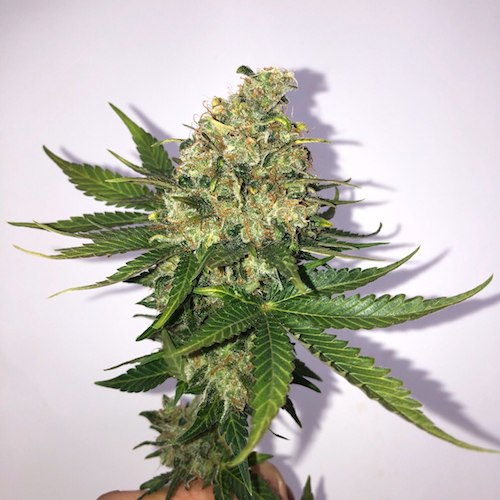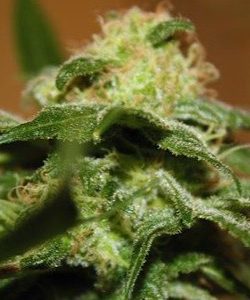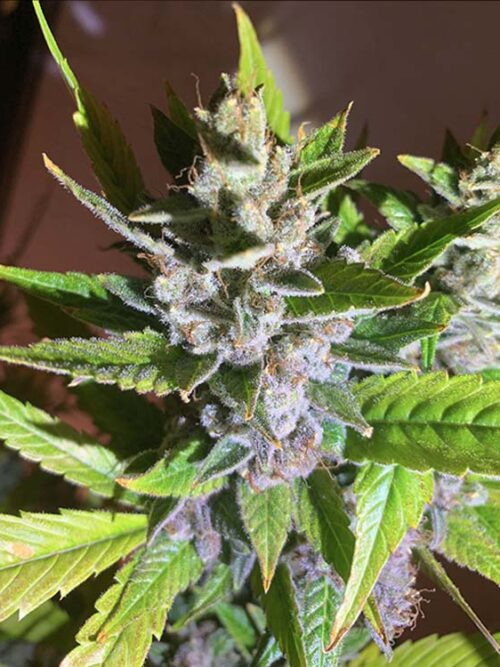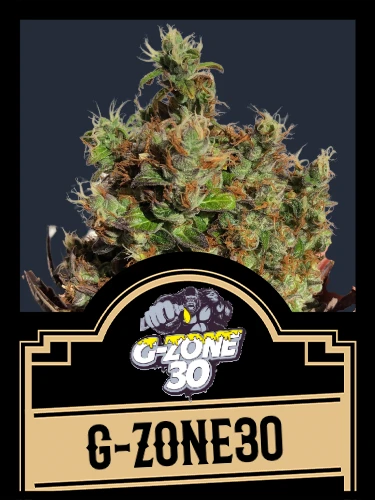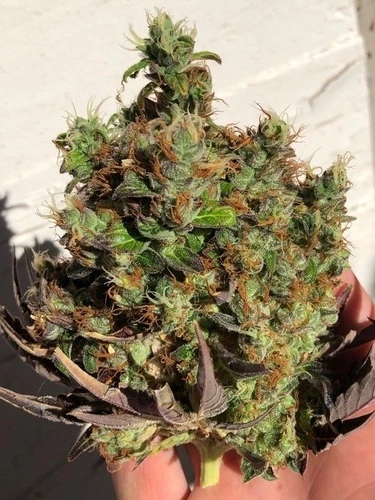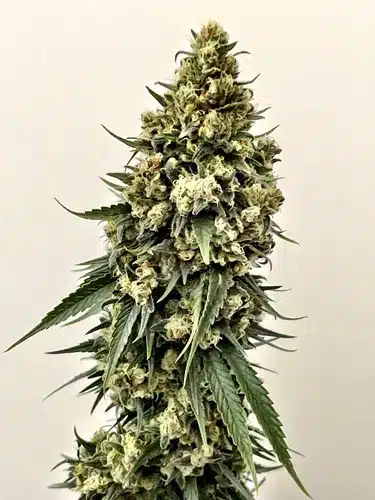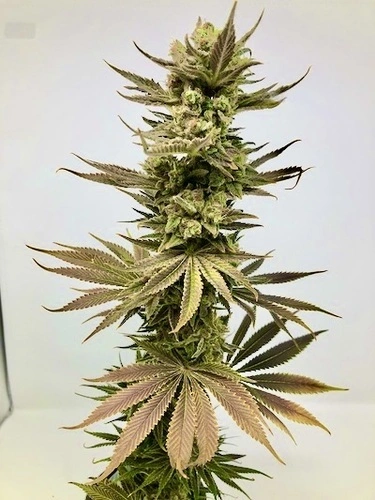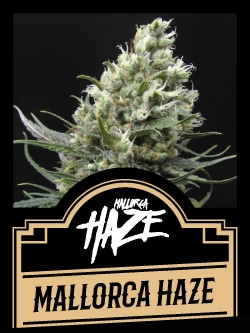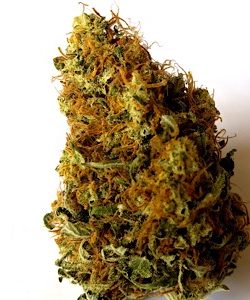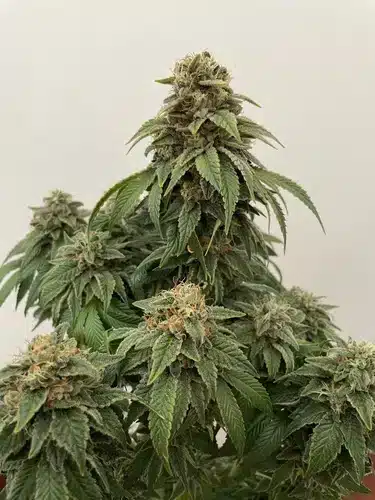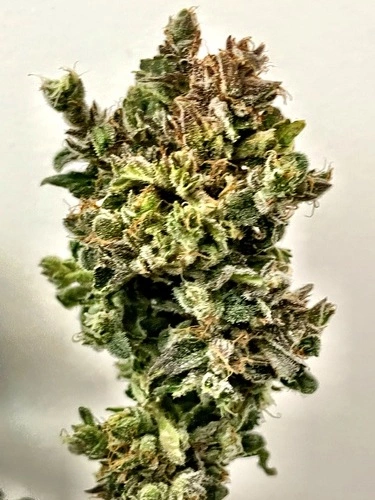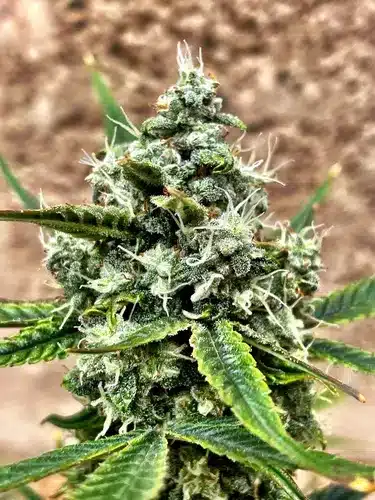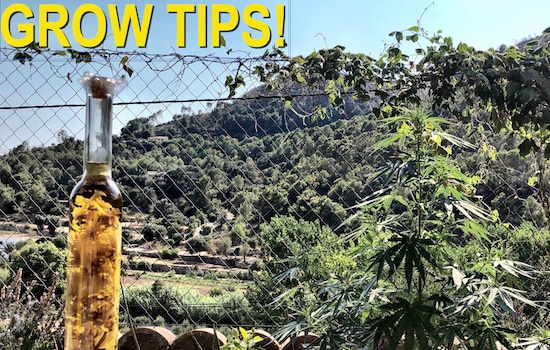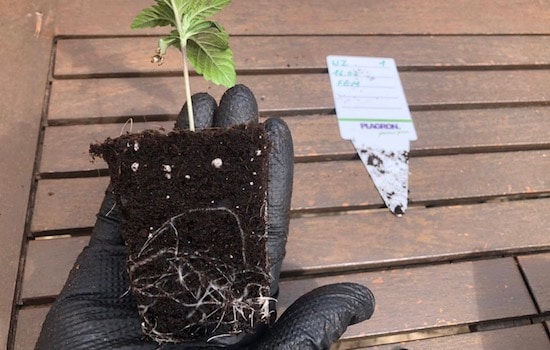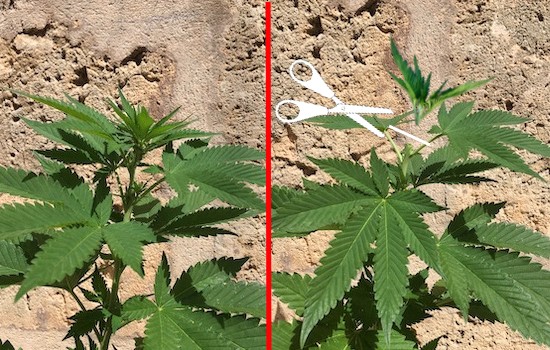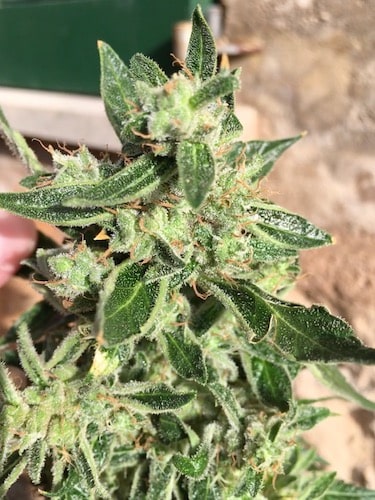Cannabis Outdoor Grow: Monthly Tips & Timelines for Europe
Grow Calendar for Better Yields and Fatter Buds – Every Outdoor Grower’s Dream
To achieve that, growing cannabis outdoors in Europe requires careful planning – taking into account both regional climate and moon phases.
This cannabis growing calendar provides monthly tips tailored to various European regions – from Scandinavia to Southern Europe – and shows you how to get the most out of your outdoor grow.
Regional Grow Timelines
Europe features a wide range of climate zones – from the cool North to the hot South. These differences directly affect light cycles, temperatures, and the ideal planting time.
If you tailor your outdoor cannabis grow to local conditions, you reduce risks like mold, cold damage, or growth issues – creating the foundation for better yields and fatter buds.
Below, you’ll find custom grow schedules for Scandinavia, Central Europe, Southern Europe, and Eastern Europe.
Cannabis Outdoor Growing Calendar for Scandinavia
(e.g., Sweden, Norway, Denmark)
Climate Zone: Cool temperate to boreal – short summers, long daylight hours, high humidity
Challenges & Considerations
Growing cannabis outdoors in Scandinavia is challenging, but not impossible – especially in southern Sweden, southern Norway, or Denmark where growers see good results.
The growing season is short, but extremely long daylight hours (up to 18 hours in June) allow plants to grow vigorously in a short time.
Regional Conditions:
- Long days partially compensate for cooler temperatures
- Nights remain cool even in summer (10–15 °C) – can slow growth in sensitive strains
- High humidity → risk of mold starting in August
- Highly weather-dependent – sudden changes within days
Due to Scandinavia’s cool, short, and wet summers, cannabis strains need very specific traits – otherwise you risk mold, stunted growth, or total failure.
Here’s a guide to ideal plant traits for outdoor cannabis grows in Scandinavia, with explanations:
Which Cannabis Strains Are Best for Outdoor Growing in Scandinavia?
Look for the following plant characteristics when choosing seeds for outdoor cannabis cultivation in Scandinavian countries:
1. Short Flowering Time (Early Finishing)
Strains with a flowering time under 70 days are ideal for the Nordic climate.
Why:
- Outdoor season often ends by September due to rain, wind, and frost
- Late-flowering strains (like Haze) may never finish or will mold in the final weeks
2. Hardy Growth & Cold Tolerance
Strains that stay active even with cool night temperatures (10–12 °C) and don’t shut down.
Why:
- Even in midsummer, temperatures in Northern Europe can fluctuate drastically
- Mediterranean or tropical strains like Amnesia Haze require constant warmth – not suitable
- Indica-dominant hybrids or Nordic crosses are better adapted
3. Fast Vegetative Growth
Ideal strains make full use of the long June/July days (up to 18–20 hours of light).
Why:
- Short summer – plants need to grow fast before flowering starts
- High light intensity for many hours = chance for vigorous growth
- Crucial for autoflowers – they can’t afford to be slow
4. Compact, Discreet Structure (Optional – for stealth)
Smaller or bushier plants are ideal for balconies, gardens, or guerrilla grows.
Why:
- Less visible = lower risk
- Less wind resistance = more stable in unpredictable weather
- Works well in pots or raised beds
Advantages of Autoflowering Genetics
Autoflowers are often the top choice in Scandinavia, with the following benefits:
Why they work well:
- Not light-dependent → begin flowering automatically after 3–4 weeks
- Fast finishing (8–10 weeks) → allows for two grow cycles per season
- Compact, hardy, and weather-resistant
Our Strain Recommendations for Norway, Sweden, Denmark
Calendar for Outdoor Cannabis Growing in Scandinavia
Proven routine for short summers and long days. Month-by-month instructions and tips for northern climates.
March–April: Pre-Germination Indoors Under Grow Lights
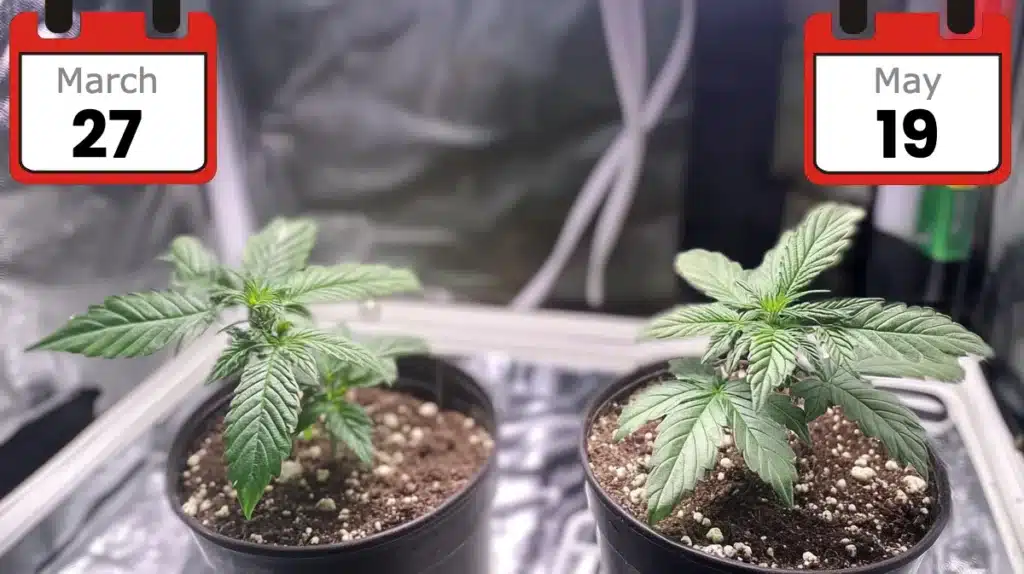
The growing season is short – starting early indoors helps make full use of the warm months. Seeds can be germinated as early as March and raised under artificial light.
Why:
- Outdoor temps often below 10 °C until May
- Early indoor start (e.g., on a windowsill or under LEDs) produces strong young plants
- Autoflowers can be harvest-ready by May/June
Indoor Pre-Growing Conditions:
- Light: 16/8 (20/4 for Autoflowers) cycle under LEDs or T5 fluorescent tubes
- Pot size: 1–3 L pots (typical for seedlings)
- Temperature: 20–25 °C
For more on germination and transplanting, see our article Growing Cannabis Outdoors.
Mid-May – Early June: Transplant Outdoors

Once the last frost has passed, move young plants outside – ideally with protection (mini greenhouse or plastic tunnels). Potted plants offer maximum flexibility.
Why:
- Weather is still unstable – wind, cold, rain are common
- Daily acclimatization (hardening off) before full outdoor exposure
- Early-planted autoflowers may be harvest-ready by July
June – Mid-July: Vegetative Phase
Now there are long days with up to 18-20 hours of light – perfect for rapid growth. A good supply of nitrogen, water and light is now crucial for strong plants.
It is also recommended to fertilize with selicates to prevent mould and insect infestation.
Why:
- Extremely long days → accelerated growth
- Especially important for autoflowers, which don’t respond to daylight changes
Mitte Juli – August: Blütephase
Days begin to shorten – photoperiod strains start blooming. For autoflowers, this is often harvest time. Warning: mold risk rises sharply in August!
During early flowering period, we recommend adding calcium and magnesium to the fertilizer to prevent a later deficiency.
At the end of the flowering period, we recommend potassium to promote the ripening of the flowers and to break down chlorophyll.
Why:
- Humidity increases – open bud structure & airflow now essential
- Mold risk for dense buds – watch for signs (Botrytis!)
- Narrow weather windows → early-finishing strains have the edge
- Potassium improves resin formation, strengthens the cell structure and ensures hard buds
Late August – Mid-September: Harvest Time

By this point, all plants should be harvested – high humidity, lower temperatures, and early ground frosts make late-season growing too risky.
Why:
- Early harvest = safe harvest – late strains risk full loss
- Autoflowers from second cycle must also be harvested now
- Resin production stalls below 15 °C – quality suffers
Tip: Tip: The best way to determine the optimum time for harvesting cannabis is by looking at the trichomes, and we describe exactly how this works step by step in this article.
Tip: Autoflower Strains Allow Two Grow Cycles in Scandinavia
- Cycle 1: Germinate March/April → Harvest July
- Cycle 2: Germinate May/June → Harvest August/September
Moon Phase Tips for Scandinavia
- New Moon (March/April): Ideal for indoor germination
- Waxing Moon (May): Harden off & transplant outdoors
- Full Moon (June/July): Growth boost – great for feeding & training
- Waning Moon (Late August): Begin early harvest to prevent mold
Additional Tips
- Use pots or raised beds for more control and weather protection
- Mini greenhouses or transparent domes extend the season
- Autoflowers or classic fast-flowering strains are a must – not all regular strains will mature
- Start mold prevention early – fungicides & airflow management are key
Cannabis cultivation calendar for Central Europe (e.g. Germany, Austria, Switzerland, Northern France)
Climate zone: temperate – four seasons, changeable, medium-long summers
Outdoor growing in Central Europe is quite possible, but requires careful planning. The climate is changeable, but relatively stable during the growing season. In regions such as southern Germany, Austria or Switzerland, the summers are long enough to successfully bring photoperiod varieties to maturity – with certain restrictions due to weather changes, rain or the risk of mold.
Special features & challenges:
Central Europe offers a balanced environment for cultivation: not too hot, not too cold – but often too wet in late flowering. Late-flowering varieties such as sativas quickly come under pressure if the fall is rainy. On the other hand, early years with mild weather in April or May make it possible to plant out strong young plants safely.
Changeable weather conditions, especially in late summer, require resistant genetics with a short flowering period and the highest possible resistance to mold. Especially with dense growth and compact buds, there is a risk of bud rot. However, if you also work with moon phases, good air circulation and site selection, you can expect thick buds and high yields.
Regional conditions:
- Good light conditions from May to August – more in the south than in the north
- Plenty of rain and moisture from mid-September – risk of mold
- Strong day/night fluctuations in spring and fall
- Wind and risk of thunderstorms in areas close to the Alps
Which cannabis plants are suitable for outdoor growing in Central Europe?
These characteristics are ideal for stable harvests in Germany, Austria & Co:
1. Short to medium flowering period (< 65 days)
Why:
- Fast-flowering varieties finish flowering before the bad weather period from mid-September.
- Varieties with a long flowering phase, such as many Haze or Landrace varieties, only make it in top locations (e.g. Upper Rhine, Southern Styria).
2. Adaptability to temperature fluctuations
Why:
- Night temperatures often drop below 10 °C in spring & fall.
- Hybrids with an indica component or robust autoflowers can cope with this better than tropical sativas.
3. Automatic varieties for short seasons or city grows
Why:
- Autoflowers grow discreetly, mature early and are weather-resistant.
- Perfect for balconies, small gardens or a quick late summer round.
Cannabis Variety recommendations for Central Europe:
Schedule for outdoor cannabis growing in Central Europe
Safely through the year – with a proven grow routine for Central European climates.
March-April: Pre-germination & pre-growing under artificial light

Now is the best time to pre-grow indoors. Photoperiod varieties in particular benefit from an early start – this way they grow vigorously and are ready for the start of outdoor life.
Reason:
- Outdoor temperatures are usually still too low
- Starting indoors saves growing time & protects against late frost
- Place plants outdoors from a height of approx. 20-30 cm
Indoor Pre-Growing Conditions:
- Light: 16/8 (20/4 for Autoflowers) cycle under LEDs or T5 fluorescent tubes
- Pot size: 1–3 L pots (typical for seedlings)
- Temperature: 20–25 °C
For more on germination and transplanting, see our article Growing Cannabis Outdoors.
May: Plant out outdoors

After the ice saints (mid-May), it is safe in most regions to plant the plants outdoors. At higher altitudes or with sensitive varieties, temporary weather protection can help.
Reasoning:
- Night temperatures >10 °C ensure growth
- Pots or raised beds allow more control
- Greenhouse or cold frame extends the season & protects against weather changes
June – mid-July: Growth phase (vegetative)
Now the plants explode in growth: up to 16 hours of daylight and rising temperatures create the best conditions for a vigorous vegetative phase.
Adjust the fertilizer line, i.e. add more nitrogen and, if necessary, fertilize with selicates to prevent mould and insect infestation.
Reason:
- Classic, photoperiodic varieties grow strongly before flowering
- Autoflowers already go through a large part of their life cycle here
- Good nitrogen supply & training (e.g. LST) promote yield and shape
Mid-July – September: Flowering phase
The days are getting shorter – the cannabis plants are starting to flower. Attention is now required: weather, humidity and nutrient requirements change noticeably.
During early flowering period, we recommend adding calcium and magnesium to the fertilizer to prevent a later deficiency.
At the end of the flowering period, we recommend potassium to promote the ripening of the flowers and to break down chlorophyll.
Reasons:
- Flowering usually starts at the end of July
- From August, the risk of mold & botrytis increases
- Organic phosphorus-potassium fertilizers promote flower formation
- Potassium improves resin formation, strengthens the cell structure and ensures hard buds
Mid-September – October: Harvest time

Now it’s time to weigh up: harvest on time or take a risk? Early-flowering varieties ensure yield, late varieties such as Haze often need artificial support (e.g. weather protection, dehumidification).
Reasoning:
- Depending on the variety and location, harvesting can continue into October
- Rainy weeks → high risk of mold → better to harvest early
- Resin quality & aroma are best in dry weather
Tip: Tip: The best way to determine the optimum time for harvesting cannabis is by looking at the trichomes, and we describe exactly how this works step by step in this article.
Autoflowers also allow two cycles in Central Europe:
- Round 1: germination in March/April, harvest in June/July
- Round 2: germination in May/June, harvest in August/September
Reason:
- Morning dew, rain & cold greatly increase the risk of mold
- Full moon: ideal time for harvesting & sorting
- Drying in a sheltered room with ventilation – important!
Moon phase tips for Central Europe:
- New moon (March/April): Germination & repotting
- Waxing moon (May-June): Planting out, fertilizing, training
- Full moon (July-August): Support flower development
- Waning moon (September): Harvest & plant protectione.g.
Cannabis cultivation calendar for Southern Europe (e.g. Spain, Portugal, Italy, Southern France, Greece)
Climate zone: Mediterranean – mild winters, hot, dry summers, long vegetation period
Southern Europe offers ideal conditions for outdoor cannabis growing. The combination of early spring, long, hot summers and late first frosts creates an extremely long growing period – often from March to October or even November. Perfect for large plants, fat buds and high yields. However, the heat, drought and pest pressure pose their own challenges.
Special features & challenges:
Outdoor growing is particularly rewarding in southern Europe – the season is long and there’s plenty of light. Nevertheless, a well thought-out plan is necessary: Lack of water, heat stress, pests (especially spider mites) and severely drying soil can quickly become a danger – especially for young plants.
Regional conditions:
- Long growing season: sometimes >8 months possible
- Very many hours of sunshine (e.g. Spain: 11-13 hours in April, >14 hours in June)
- Hot, dry summers → drought stress, but ideal flowering climate
- Hardly any precipitation in midsummer
- High UV intensity → promotes resin production, but can stress young plants
- Early autumn often still warm & dry → late varieties possible
Which cannabis plants are suitable for outdoor growing in Southern Europe?
1. Medium to long flowering time (9–12 weeks)
Why:
The long summer also allows for the cultivation of strains with a long flowering time (e.g., sativa-dominant Haze hybrids), which would be impossible in Northern Europe. Full maturity and terpene development are often more likely here.
2. Heat tolerance & drought resistance
Why:
Water is scarce – plants that remain stable even at 35°C+ have an advantage. Mediterranean strains like Lemon Haze, Critical, or Amnesia often come from arid regions and tolerate drought better.
3. Pest resistance
Why:
Spider mites, aphids, and whiteflies love warm, dry climates. Resilient strains with strong leaf structures and broad genetics help to stay chemical-free.
Cannabis Strain recommendations for Southern Europe:
Schedule for outdoor cannabis growing in Southern Europe
Maximize the long season – with the right timing for XXL yields.
March – Early April: Germination & Pre-Growing (Indoor or Outdoor)

In southern Spain, southern Portugal, or Sicily, seeds can be germinated directly outdoors from the beginning of March – provided there are no more late frosts. Alternatively, indoor pre-growth is ideal for a healthy start.
Reason:
- Temperatures reach over 15°C early on.
- Direct sowing is possible, but young plants are sensitive to wind and UV light.
- Growing in pots protects against pests and birds.
Information on pre-growing plants under artificial light can be found further up in this article.
Mid-April – May: Planting outdoors.

If the plants were grown indoors, they should now be placed outdoors.
Depending on the microclimate, plants can be planted out as early as the end of March or April in southern regions. The night-time temperatures are also decisive here.
Reason:
- Night temperatures >10 °C sometimes as early as March
- Protective measures against wind, heavy rain and drying out are important
- Autoflowers thrive particularly well with an early start
April – mid-July: Growth phase (vegetative)
Now the main sowing period begins – regular, photoperiod varieties begin their vegetative growth in late April – early May. Autoflowers can already start their first round outdoors.
Adjust the fertilizer line, i.e. add more nitrogen and, if necessary, fertilize with selicates to prevent mould and insect infestation.
Reason:
- Safely frost-free.
- Soil has warmed up → faster root growth.
- The earlier the start, the larger the plant will be when it flowers.
- June – August: Main growth phase under midsummer conditions.
The plants grow quickly, often over 2 meters if there is enough water. Sunlight ensures massive photosynthesis. Regular watering and light pruning help reduce stress.
Reason:
- Extreme temperatures → evaporation protection necessary (e.g., mulch)
- Plants benefit from LST & SCROG → better air circulation
- Prevent pests with neem oil or beneficial insects (ladybugs)
Mid-July – Late September: Flowering phase
September – October (possibly November): Flowering & Harvest
The variety determines the harvest time: Indicas usually in mid- to late September, sativas often not until October. In southern Spain or Greece, some Haze hybrids can even ripen until November.
During early flowering period, we recommend adding calcium and magnesium to the fertilizer to prevent a later deficiency.
At the end of the flowering period, we recommend potassium to promote the ripening of the flowers and to break down chlorophyll.
Reason:
- Autumn is often warm and dry → perfect for late ripening
- Bud rot is less of a problem than in Northern or Central Europe
- Drying is often easier thanks to low humidity
- Potassium improves resin formation, strengthens the cell structure and ensures hard buds
Mid-September – Mid October: Harvest time
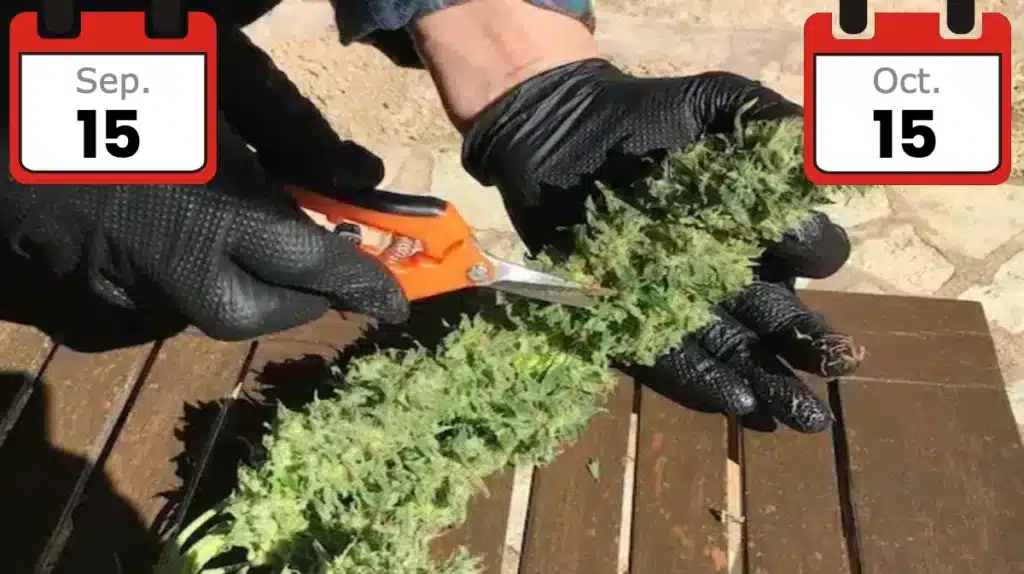
Early-Harvest Strains (Ready by mid–late September)
Ideal for growers who want to avoid autumn rains and rising humidity.
- Indica-dominant strains – These usually flower faster (7–9 weeks).
- Examples: Northern Lights, Early Skunk, Afghan Kush
- Autoflowering strains – Independent of light cycles, ready 8–10 weeks after germination.
- Great for early summer harvests (July–August) or a second late-season run.
Best for: Humid or unpredictable autumns, high-altitude regions, quick turnaround
Späte Erntesorten (Ende September bis Mitte Oktober)
Need a longer flowering time but often produce higher yields and more complex effects.
- Sativa-dominant strains – Longer flowering period (10–12+ weeks).
- Hybrids with strong sativa influence – Often require harvest in early–mid October.
Risk: Need dry, stable weather in October to avoid mold or incomplete ripening
Best for: Coastal or arid regions with warm, dry autumns
Additional tips for Southern Europe:
- Mulching helps retain soil moisture & protect roots
- Choose wind-exposed but shade-free locations → optimal air circulation
- Provide potted plants with partial shade at 40°C + brief periods of partial shade on hot days
- Provide early protection against spider mites & thrips
- 2–3 grow cycles per year with Autoflowers possible!
Moon Phase Tips for Southern Europe
- New Moon (February–March) – This is the ideal time to germinate cannabis seeds indoors. Root activity is supported during the new moon phase, encouraging strong underground growth and initial development.
- Waxing Moon (March–April) – A good phase for transplanting seedlings into larger containers or directly into outdoor soil. This period favors upward growth, making it excellent for vegetative expansion.
- Full Moon (May–July) – This is when plant vitality is at its peak. Use this time to fertilize, apply training techniques (like topping or LST), and encourage flowering. Prune or defoliate just before the full moon to reduce plant stress.
- Waning Moon (August–September) – This is the best time to begin harvesting early strains. As plant activity slows down, resin production is often more concentrated, leading to better aroma and potency.
- New Moon (September–October) – Ideal for harvesting late-flowering strains. The plant’s moisture content is typically lower, which helps reduce mold risk during drying and curing.
Cannabis Cultivation Calendar for Eastern Europe (e.g., Poland, Czech Republic, Hungary, Slovakia, Ukraine, Romania, Bulgaria)
Climate Zone: Continental – hot summers, cold winters, dry transitional seasons
Eastern Europe offers a vast, climatically diverse terrain for outdoor cannabis cultivation, characterized by a continental climate with hot summers and cold winters. The growing season is usually sufficiently long, but spring starts late, and autumn can surprise with early night frosts. However, the summer months are often very warm to hot – perfect for vigorous growth and dense buds.
Special Features & Challenges:
Cannabis outdoor cultivation in Eastern Europe benefits from many hours of sunshine and dry summers – ideal for an explosive growth phase. The biggest challenge is the short spring and the abrupt drop in temperature starting at the end of September. Early-flowering and mold-resistant varieties are therefore a must here, especially in the more eastern and mountainous regions.
In regions like southern Hungary, Romania, or Bulgaria, you can work with a slightly longer season than in the Czech Republic or Poland, where an early start indoors and careful strain selection are even more important.
Regional Conditions:
- Hot, often dry summers with plenty of sun
- Cold nights until mid-May and from the end of September
- Sometimes strong temperature fluctuations between day and night
- Windy and dry in spring, sometimes rainy in late summer
- High UV intensity – good for resin production, but stressful for young plants
Which cannabis plants are suitable for outdoor growing in Eastern Europe?
1. Short to medium flowering time (7–9 weeks)
Why:
To avoid the wet autumn weather and cold snaps, the plants must be ready by early October at the latest. An early harvest is essential for healthy buds.
2. Drought tolerance & heat resistance
Why:
Summers are dry in many regions, so watering needs to be supported effectively. Plants with deep rooting and heat-resistant growth are better suited.
3. Mold resistance – especially in mountainous regions and during autumn rains
Why:
Despite many dry weeks, late summer storms and morning dew can jeopardize final flowering – varieties with a loose bud structure prevent this.
Cannabis strain recommendations for Eastern Europe:
Schedule for outdoor cannabis growing in Eastern Europe
Month-by-month guide for Poland, Czech Republic, Hungary, Romania, Slovakia, Ukraine & the Balkan region
March–April: Pre-Germination Indoors Under Grow Lights

In Eastern Europe, spring is often fickle, with cold nights lasting well into April. Therefore, pre-germination and pre-growth under artificial light or on a windowsill is a proven strategy.
Reason:
- Night frost is possible until the beginning of May – early planting = high risk
- Indoor pre-growth gives a 3–5 week head start
- Autoflowers particularly benefit from an early start
During May: Planting outdoors
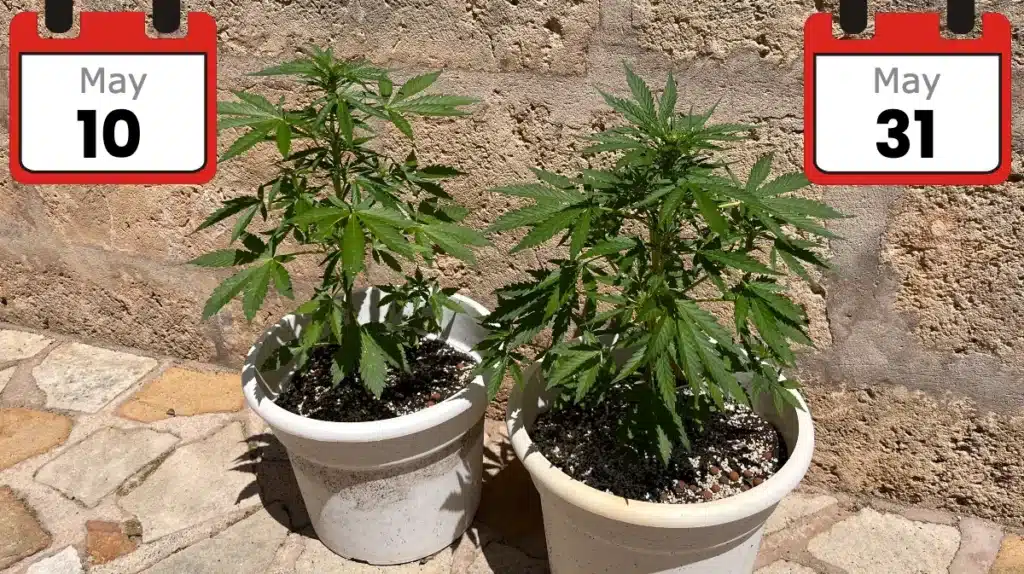
After the Ice Saints, the risk of frost is eliminated in most regions. The plants can be planted outdoors – preferably in a sunny, sheltered spot.
Reason:
- Average night temperatures >10°C from mid-May
- Especially in continental regions → strong temperature fluctuations → wind and weather protection useful
- Raised beds or pots with good drainage systems help in heavy rain
May – mid-July: Growth phase (vegetative)
The vegetation phase in Eastern Europe is intense, but shorter than in Southern Europe. Maximum growth is crucial during these weeks – especially for photoperiod varieties.
Reason:
- Day length: 15–16 hours in June = vigorous growth possible
- Regular fertilization with nitrogen (e.g., worm tea, guano) recommended
- Training techniques such as LST or topping ensure controlled growth
Mid-July – September: Flowering Phase
The flowering phase begins with decreasing daylight. The continental climate usually brings dry summers, but also sudden weather changes – e.g., heat followed by thunderstorms or cold snaps.
During early flowering period, we recommend adding calcium and magnesium to the fertilizer to prevent a later deficiency.
At the end of the flowering period, we recommend potassium to promote the ripening of the flowers and to break down chlorophyll.
Reason:
- Flowering usually begins between mid-July and early August
- Varieties with an open flower structure are more resistant to moisture
- Potassium/phosphorus-based fertilization supports resin and bud formation
Early – mid-September: Harvest Time
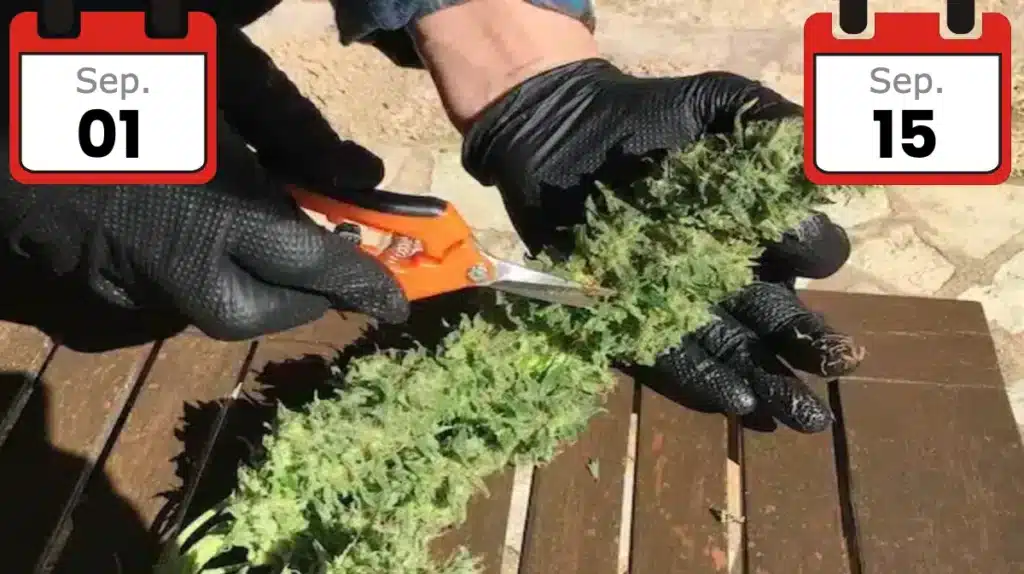
Eastern European autumns are often cool and foggy. Those who want to harvest late risk mold – therefore, early-maturing varieties or autoflowers are clearly at an advantage.
Reason:
- High humidity and temperature fluctuations in autumn
- Regular checks for mold or botrytis are necessary
- Ideal: Harvest during a dry period (2–3 rain-free days)
Tip: In Eastern Europe, two harvests are possible with autoflowers:
- Round 1: Germination in March/April → Harvest in June/July
- Round 2: Germination in May/June → Harvest in August/September
Moon phase tips for Eastern Europe:
- New moon (March/April): Perfect for germination & root formation
- Waxing moon (May-June): Transplanting & training
- Full moon (July-August): High-energy growth spurt → Fertilize!
- Waning moon (September): Prepare for cutting & drying
Additional tips for Eastern Europe:
- Use wind-protected locations or plant in rows
- In mountainous regions (e.g. Carpathians), ensure protection from the cold
- Early fungicide treatment & regular visual inspections
- Autoflowers for guaranteed success – especially in northern locations
Conclusion
A successful outdoor grow in Europe requires adaptation to regional climatic conditions and consideration of the moon phases. With careful planning and the right choice of variety, the harvest can be maximized.

